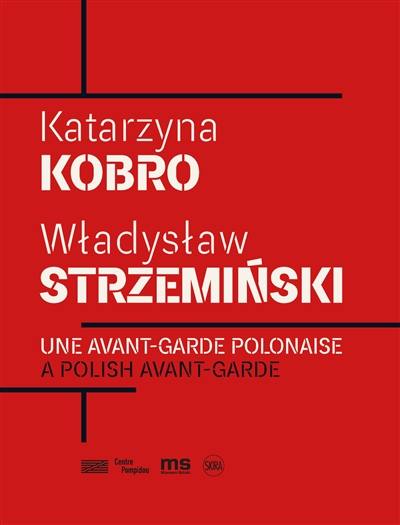
Fiche technique
Format : Relié
Nb de pages : 199 pages
Poids : 1172 g
Dimensions : 23cm X 29cm
ISBN : 978-2-37074-088-5
EAN : 9782370740885
Katarzyna Kobro, Wladyslaw Strzeminski
une avant-garde polonaise
Quatrième de couverture
Katarzyna Kobro et W(...)adys(...)aw Strzemi(...)ski sont des figures majeures de l'avant-garde constructiviste polonaise. Radicaux dans leur posture artistique, ils travaillent conjointement au renouveau de l'art. Tandis que Kobro reformule le langage moderne de la sculpture - en la professant comme forme d'architecture -, Strzemi(...)ski développe celui de la peinture, à travers sa théorie de l'unisme, poussant à l'extrême l'idée de l'autonomie organique du tableau. Ils se rapprochent des cercles réformateurs de l'art cubistes, suprématistes et constructivistes, et deviennent membres de plusieurs avant-gardes artistiques, avant de finalement créer leur propre groupe : a.r.
Artistes engagés au sein d'une époque fortement troublée, l'oeuvre qu'ils nous lèguent laisse entrevoir l'idéal qui les a menés.
Katarzyna Kobro and W(...)adys(...)aw Strzemi(...)ski were leading figures of the Constructivist avant-garde in Poland. From their radical artistic stance, they worked together to reinvigorate art. While Kobro reformulated the modernist vocabulary of sculpture, promoting it as a form of architecture, Strzemi(...)ski developed a new painterly language through his theory of Unism, taking the idea of the organic autonomy of painting to its limits.
The pair were close to the reformist movements of Cubist, Suprematist, and Constructivist art, and became members of several avant-garde groups before finally founding their own group, a.r.
The work left by Kobro and Strzemi(...)ski, two committed artists during a period of great ferment, offers a glimpse of the ideal to which they aspired.





